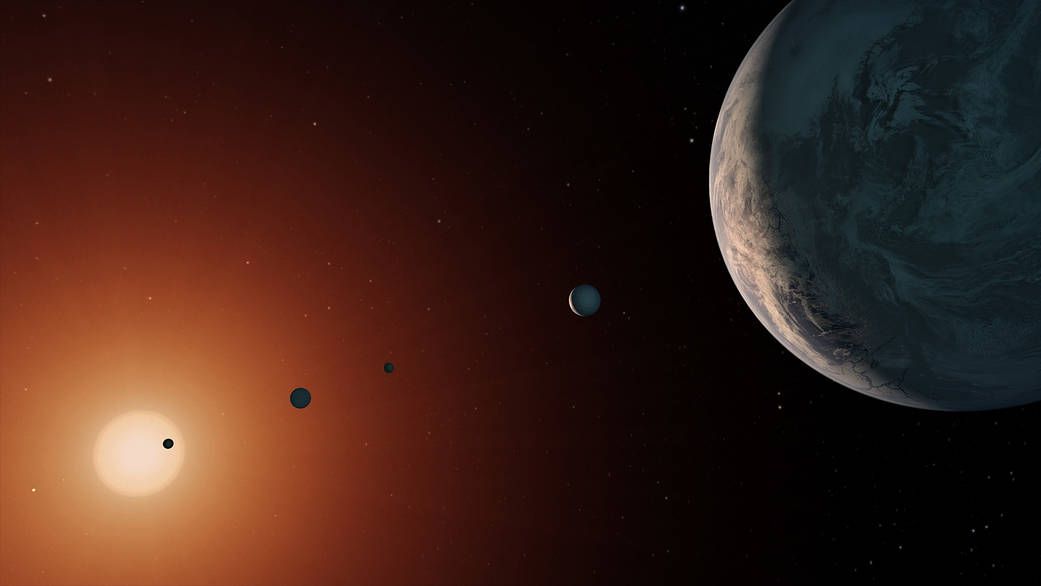
Scientists only announced less than a year ago that they had spotted seven small planets huddled around a star called TRAPPIST-1. Now new research finds that, thanks to gravitational tugging and other factors, two of those planets may be warm and possibly friendly to life.
A new study accepted for publication by the journal Astronomy & Astrophysics seeks to bolster that claim that planets, TRAPPIST-1 d and e, may host just the right conditions for life. (The seven planets are labeled b through h with increasing distance from the sun.)
The new research considers a phenomenon scientists refer to as "tidal heating," a side effect of planetary orbital patterns. As the TRAPPIST-1 planets trudge around their sun, they are each tugged this way and that by the enormous gravitational force of their star. As the planet orbits, this pull stretches it at a changing angle and its insides warm up a little from the friction. In our solar system, this phenomenon has heated Jupiter's moon Io so much that it's become a hotbed of volcanic activity.
The team found that tidal heating likely occurs on the five innermost TRAPPIST-1 planets, b through f, becoming generally weaker moving away from the sun. Other calculations included in the paper argue that except for TRAPPIST-1 c, the planets could all have a fair amount of water, suggested by their relatively low densities. Then, they went through each of the planets individually, trying to get a better picture of its interior structure and surface temperature.
All told, they concluded that two of the planets, TRAPPIST-1 d and e, are most likely to be habitable. Innermost TRAPPIST-1 b is likely way too hot, and c could have the same violent eruptions we see on Jupiter's Io. But d, they say, may be covered in a giant ocean, and e could be hiding aquatic life tucked under an icy shell.
As with other exoplanet analyses, the authors are holding out hope that the launch of the James Webb Space Telescope, scheduled for next year after many delays, will get them the data they need to understand more clearly what is happening on these distant worlds. That's particularly urgent for worlds like those in the TRAPPIST-1 system, where scientists have very high levels of uncertainty about what is really happening.
Uncommon Knowledge
Newsweek is committed to challenging conventional wisdom and finding connections in the search for common ground.
Newsweek is committed to challenging conventional wisdom and finding connections in the search for common ground.
About the writer
Meghan Bartels is a science journalist based in New York City who covers the science happening on the surface of ... Read more
To read how Newsweek uses AI as a newsroom tool, Click here.








